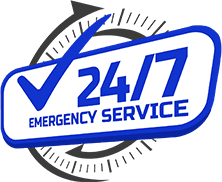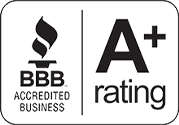Every three years, the National Electrical Code (NEC) is updated to maintain the safe installation of electrical equipment and wiring. Electricians and other contractors are expected to abide by any changes that are made to this code. While the NEC isn’t a legally enforceable document, it does serve as a set of guidelines when each state makes changes to their codes and regulations. As a homeowner, you could be impacted by these changes when you request service from an electric service provider for your residence in Palm Springs, CA.
Overall Changes to the NEC
The latest NEC manual went into effect at the beginning of 2023, and it is designed to make the code as straightforward and consistent as possible. However, the manual only details technical requirements, which means that recommendations or guidance isn’t provided to untrained individuals.
All 18 sections of the NEC manual underwent substantial rewrites compared to the 2020 edition. Many of these rewrites were designed to make the code more usable for states and electricians. Before now, the rules often included complex language without any further explanations of what a particular rule meant.
If you read this manual, you’ll find that all changes to the code are indicated with text shading. The code applies to all DC and AC electrical systems. While AC systems are more common, the use of DC systems is growing with the onset of renewable energy requirements throughout many states. Most of the AC requirements for this year’s manual have been designed around low-voltage and medium-voltage systems. Limits on DC systems were placed at 1,500 volts.
New Additions and Removals
The following changes are listed by article. For instance, article 110 involves the general requirements for electrical installations. This is a new section that’s dedicated to providing requirements for different electrical installations.
Article 231 is titled “Electric Power Sources Interconnected with an Electric Utility”. It’s a new section of the NEC manual that’s meant to provide electricians and states with better coordination for various renewable energy systems that are operating in parallel with a utility and are tied to service equipment.
Article 235 relates to branch circuits and feeders that are more than 1,000 volts. This is a new section that’s meant to consolidate all of the requirements for medium-voltage systems that were previously found in articles 210, 215, 225, and 230.
Article 245 outlines over-voltage and over-current protection for AC systems above 1,000 volts and DC systems above 1,500 volts. This section is another one that’s meant to separate low-voltage requirements from medium-voltage ones. The Part IX section in the 2020 NEC manual formed the basis for this article.
Article 305 involves requirements for materials and wiring methods for systems of more than 1,000–1,500 volts. This article is another that was created to combine numerous parts and sections.
Article 315 involves medium voltage conductors, cable terminations, and cable joints. While the article is similar to Article 311 from the 2020 version, cable terminations and cable joints were added to the content for the first time.
Article 337 focuses on Type IM of industrial mobile cable. This is a revised title for an article that was new in the previous edition of the NEC. It involves the rules and regulations surrounding drilling rig cable. The acronym for this title was selected so that it didn’t appear to be reflecting marine applications. Usability is the primary goal of this code, which is why many of this year’s changes are “cosmetic” in nature.
Article 369 focuses on tubular covered conductors (TCC) and insulated bus pipe (IBP). While there are two names in this title, the article only involves a single product. This product is defined as a hollow or cylindrical conductor that contains a strong insulation system, has a grounding layer and conducting grading layers in the insulation, and is available alongside a covering of metallic or insulating material. This type of system comes with a bus pipe, fittings, and mounting structures. Since IBP is considered to be a new wiring method, it’s required to be placed in the NEC.
Article 371 is a new article that centers around flexible bus systems, which involve another type of wiring method. A flexible bus is a rectangular conductor that’s combined with insulation. This system incorporates numerous fittings that are used to support, secure, and eventually terminate the bus. All flexible bus systems are required to be specified and designed for installation by an engineer based on the NEC listing and the installation instructions provided by the manufacturer. This system is currently recognized only for electrical systems that are at or below 1,000 volts.
Article 395 involves overhead conductors that are higher than 1,000 volts. This is a relocated article that was once Article 399 and was changed based on the need to get rid of medium-voltage articles.
Article 480 is centered on “Stationary Standby Batteries”. It’s a revised title for a section that was introduced in 706 but was based on information included in the NEC since the first edition. The new article in the 2020 edition was made under the belief that storage batteries were completely different from the latest generation of efficient energy storage systems and that the legacy systems should have separate requirements. While this article is still in place, the title has been changed to better differentiate the two types of batteries. The article is now limited to batteries that contain nickel-cadmium and lead-acid cells.
Article 495 focuses on AC equipment of more than 1,000 volts and DC equipment of more than 1,500 volts. The content was previously located in Article 490 but was changed because of the new numbering convention.
Article 510 was specific to hazardous locations. However, this article was considered unnecessary and has since been removed from the 2023 NEC.
Article 512 involves cannabis oil systems and equipment that use flammable materials. This article details the hazards that occur while cannabis is being processed. The processes that are regulated are ones that include pentane, ethanol, hexane, and butane.
Article 720 was focused specifically on equipment and circuits that operate at lower than 50 volts. It was deleted in this year’s NEC update since it was first written to solely regulate stand-alone electrical systems on farms that used 32 volts DC. These electrical systems haven’t been operated in years.
Article 722 is a new section that addresses power-limited circuits. It combines cable requirements that were previously detailed throughout articles 725, 760, and 770. The purpose is to avoid duplicate content.
Article 724 is another new section that focuses on class one circuits. The definition of these circuits has been revised to solely apply to power-limited circuits with a power output of 30 volts.
If you are located in or near the Palm Springs area and you need to have your power system upgraded or repaired, our team at Home Team Electric will tend to all of your electrical needs. We offer a complete array of electrical services, including wiring and rewiring, lighting, ceiling fans, smoke detectors, circuit breakers, panel upgrades, surge protectors, EV charging stations, and code compliance. We can protect your home and electrical devices from damage and make your life more comfortable. You can contact us for everything from a malfunctioning light switch to a whole-home electrical remodel. Call Home Team Electric today to schedule an appointment.




